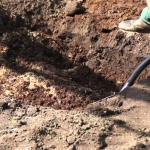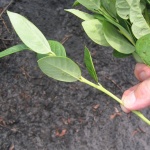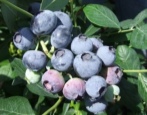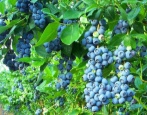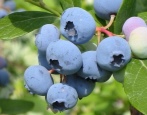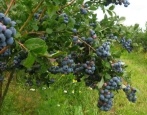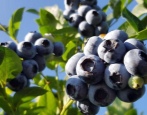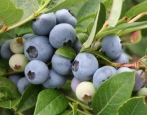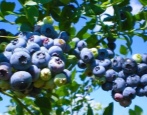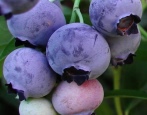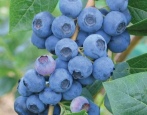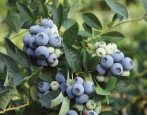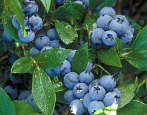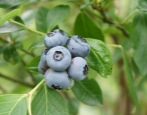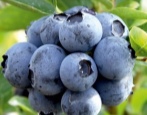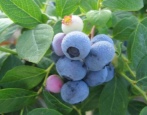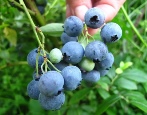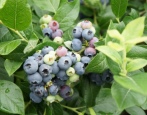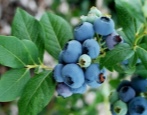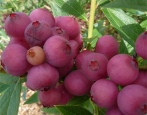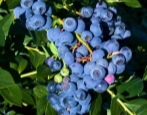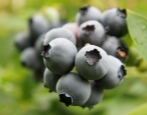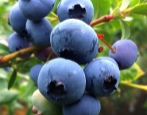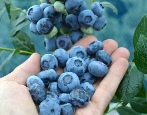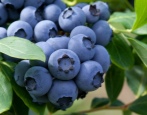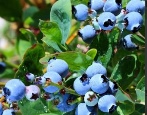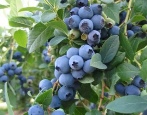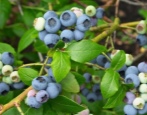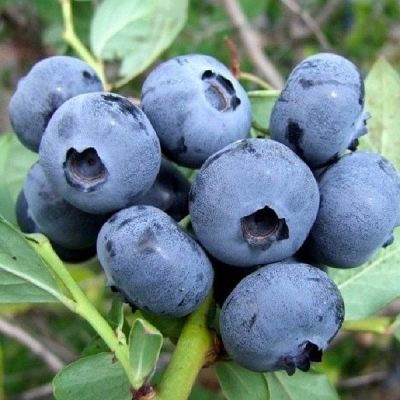
- Authors: North America
- Ripening terms: mid-season
- Growth type: tall
- Bush height, m: 1,5-2
- Taste: sweetish-sourish, pleasant
- Yield: high
- Average yield: 4.5-6 kg per bush
- Fruit size: large
- Fruit shape: round
- Fruit color: light blue
Blueberry Spartan is a high-yielding variety that produces tasty and aromatic fruits. The universal purpose of berries allows you to use them not only fresh, but also make vitamin preservation and delicious desserts. To obtain a high-quality harvest, it is imperative to observe all agrotechnical features of crop cultivation.
Description of the variety
Blueberry Spartan (Spartan) - the result of painstaking work of breeders-practitioners from the United States. In 1977, the culture was officially registered and entered the retail trade. The breeding basis of this variety became the most common blueberry species in America, which grew in wetlands. The high-yielding variety quickly gained popularity not only in its homeland, but also throughout the European continent due to its yield, which reaches 6 kg per adult plant, as well as high taste characteristics of the fruits and their versatility.
The height of a tall deciduous perennial plant varies from 1.5 to 2 meters. Powerful central shoots of ripe cherry color have straight trunks of medium diameter. The crown is not branched. The deep green deciduous mass has a straight and slightly elongated structure. In late autumn, the leaves take on a burgundy hue, which makes green spaces decoratively attractive.
The depth of a highly branched fibrous root system can reach 45 cm. Intensive root growth occurs in early spring and autumn, but in summer and winter, their growth stops. The formation of inflorescences occurs at the ends of the shoots. Up to 10 flowers are formed in one inflorescence.
Advantages:
- resistance to low temperatures;
- high taste indicators;
- the formation of a bountiful harvest;
- large-fruited;
- high level of keeping quality and transportability;
- high level of resistance to diseases and pests;
- self-fertility.
Disadvantages:
- intolerance to swampy areas;
- exactingness to the ground;
- intolerance to drying out of the soil;
- long entry into the fruiting phase;
- transportation in special containers that maintain a stable temperature regime.
Fruit characteristics
Globular blueberry fruits are colored in a pale blue shade with a matte sheen. The mass of large berries can reach 2 grams, and their average diameter is 16-18 mm. The dense, fleshy structure of the fruit is very juicy and aromatic. Distinctive features of berries - no shedding, which significantly increases their presentation and profitability.
Taste qualities
The excellent taste characteristics of the berries receive high reviews from all connoisseurs of blueberries, and their sweet juice with hints of sourness is to the taste of even gourmets. The fruits have a delicate and subtle aroma. Due to their high taste characteristics, blueberries have a universal purpose and are used not only for fresh consumption, but also for freezing, making vitamin tea, aromatic preserves and delicious fruit desserts.
Ripening and fruiting
The ripening period of blueberry fruits depends on the region of growth and the time of flowering of the culture. In a temperate climate, the plant blooms in early June, which makes it impossible for the inflorescences to freeze. The technical ripeness of the fruit begins in early July, therefore Spartan blueberry belongs to mid-season crops.
The fruiting period of the variety stretches for almost a month.Harvesting occurs at least 5 times, which significantly increases labor costs. The most attractive presentation are berries of 1 or 2 collections.
Yield
An adult plant of a high-yielding variety, under favorable climatic conditions and proper care, is capable of forming up to 6 kg of juicy fruits. The collection of the first fruits can be carried out 4 years after planting the seedlings. For 8 years of growth, the bushes are capable of producing a stable annual harvest. Due to the non-shedding of berries, harvesting can be carried out both manually and mechanically.
Self-fertility and the need for pollinators
Blueberry Spartan belongs to self-fertile crops. However, to improve the quality and volume of the crop, practitioner breeders recommend planting pollinators nearby that have a common flowering period.
Growing and caring
Blueberry Spartan belongs to those crops in which the amount of the harvest directly depends on the quality of the care of green spaces. The most favorable period for planting young seedlings is spring, immediately after the snow cover melts. The landing site should be well lit, but it may have some partial shade.
A prerequisite is deep groundwater and acidic soil. The most optimal soil is a mixture of peat, sand, sawdust and pine needles. For planting, it is better to purchase shoots with a closed root system. The size of the planting pit is 60 cm x 50 cm.The optimal distance between the bushes is 100 cm.
When breeding this variety of blueberries, it is necessary to take into account the peculiarities of its cultivation. A plant at any age requires obligatory moderate watering. The soil in the root zone should not dry out. You can reduce the frequency of watering by mulching the soil.
Green spaces are very responsive to regular fertilization. It is strictly forbidden to use organic matter. Agronomists recommend regularly checking the acidity of the soil and, if necessary, adding colloidal sulfur to the soil. Periodic loosening of the soil and removal of weeds will help to improve the growth of the root system.
Particular attention should be paid to pruning bushes that are more than 6 years old. In green spaces, the lower young growth and old shoots must be removed annually. 5-6 healthy and strong shoots are enough for one plant. Sanitary and formative pruning should be done in early spring or late autumn after the leaves have fallen off.

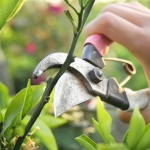
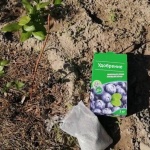
Disease and pest resistance
The high-yielding variety has a high immune response to the most common diseases and pests. However, in order to prevent the appearance of diseases such as moniliosis, the death of shoots and the mummification of berries, breeders-practitioners recommend that preventive treatments of green spaces be carried out. Ignoring this recommendation can lead to damage to fruits and death of shrubs.
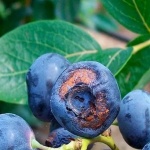
Winter hardiness and the need for shelter
Despite the fact that the culture is frost-resistant and easily tolerates severe frosts, agronomists recommend covering young and immature plants with a special covering material or spruce branches before wintering, which will not only protect the root system from freezing, but also prevent rodents from spoiling the bark of plants.

Location and soil requirements
To obtain a high-quality and stable harvest when growing Spartan blueberries, special attention must be paid to the choice of the place of growth. The selected area should be sunny, with a little partial shade. The plant does not tolerate waterlogged soil. Cold groundwater negatively affects the development of the root system and can lead to a decrease in crop volumes.
Young bushes can only be planted in acidic soil. The most suitable soils are peaty, loamy and sandy. Clay areas require an additional drainage layer.
